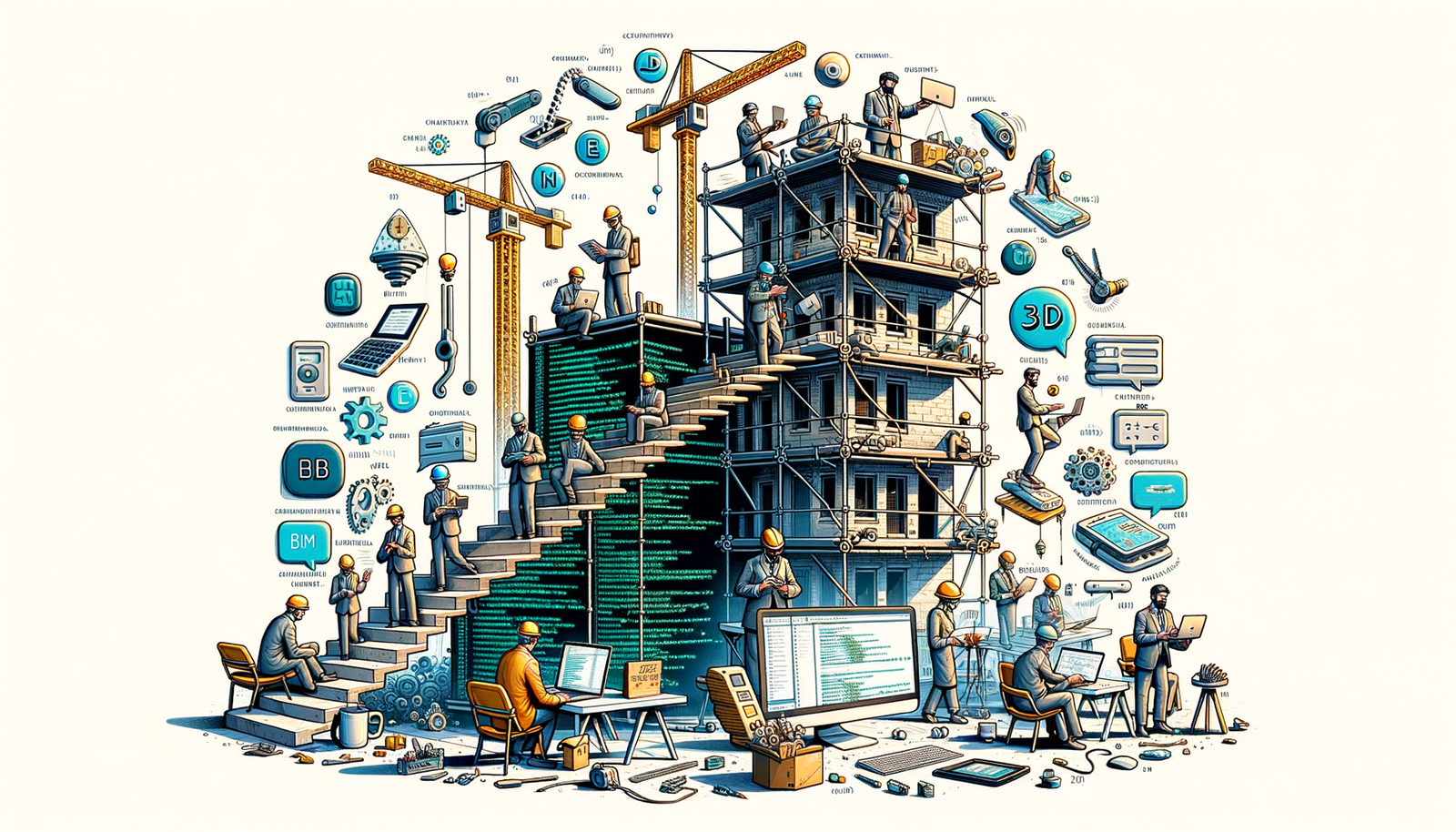Your Cart is Empty
Customer Testimonials
-
"Great customer service. The folks at Novedge were super helpful in navigating a somewhat complicated order including software upgrades and serial numbers in various stages of inactivity. They were friendly and helpful throughout the process.."
Ruben Ruckmark
"Quick & very helpful. We have been using Novedge for years and are very happy with their quick service when we need to make a purchase and excellent support resolving any issues."
Will Woodson
"Scott is the best. He reminds me about subscriptions dates, guides me in the correct direction for updates. He always responds promptly to me. He is literally the reason I continue to work with Novedge and will do so in the future."
Edward Mchugh
"Calvin Lok is “the man”. After my purchase of Sketchup 2021, he called me and provided step-by-step instructions to ease me through difficulties I was having with the setup of my new software."
Mike Borzage
Design Software History: The Genesis and Evolution of Structural BIM Software: Key Players, Technologies, and Future Trends
July 17, 2024 4 min read


The Genesis of Structural BIM Software
The journey of Building Information Modeling (BIM) software is a fascinating tale that begins with the early needs and challenges faced by the construction and architecture industries. These challenges included the necessity for more precise and efficient design tools to manage complex construction projects. Traditional methods were often time-consuming and prone to errors, sparking the need for more sophisticated solutions. This need led to the birth of BIM, which fundamentally changed how buildings are designed, constructed, and managed.
Several key players and pioneers were instrumental in the development of early BIM tools. Companies like Autodesk, Bentley Systems, and Graphisoft were at the forefront. Autodesk, known for its AutoCAD product, played a significant role by developing and acquiring tools that would become cornerstones in BIM. Bentley Systems, with their MicroStation software, provided robust tools for infrastructure design. Graphisoft, a smaller but highly innovative company, introduced ArchiCAD, which was one of the first software applications to provide a comprehensive BIM solution.
The technological foundations that made BIM possible were numerous and critical. These included advancements in computing power, which allowed for the handling of complex 3D models, and improvements in data management systems that facilitated the integration and manipulation of large datasets. Additionally, the development of parametric modeling capabilities enabled more dynamic and flexible design processes, allowing architects and engineers to make changes more efficiently.
Evolution Through the Decades
The 1990s were formative years for BIM software. This decade saw significant advancements and the release of pioneering software. ArchiCAD by Graphisoft was introduced during this time and was among the first to offer a comprehensive BIM solution. This period also saw the early versions of Revit, developed by Charles River Software, which would later become one of the most prominent BIM tools in the industry.
In the 2000s, BIM software matured and gained widespread adoption. One of the most significant developments was Autodesk’s acquisition of Revit Technology Corporation in 2002. This acquisition allowed Autodesk to integrate Revit’s powerful BIM capabilities into their product lineup, significantly advancing the field. Bentley Systems continued to contribute to the industry with innovations in their MicroStation software and other tools, reinforcing their position as a leader in infrastructure design.
- Revit Acquisition by Autodesk: The integration of Revit into Autodesk’s suite of tools expanded its capabilities and market reach, transforming Revit into a cornerstone of modern BIM software.
- Bentley's Advancements: Bentley Systems enhanced their offerings with continuous improvements to MicroStation and various BIM tools, supporting complex infrastructure projects.
The 2010s marked a period where BIM software began to integrate more seamlessly with other design and construction tools, fostering greater collaboration and data sharing among stakeholders. This integration was crucial for improving efficiency and reducing errors in construction projects. The focus shifted towards creating more collaborative environments where architects, engineers, and contractors could work together more effectively.
Technological Innovations and Core Features
One of the most revolutionary aspects of BIM software is parametric modeling. This technology allows for the creation of building models where changes to one element automatically adjust related elements, maintaining consistency and accuracy throughout the design process. Parametric modeling has fundamentally changed how architects and engineers approach building design, allowing for more creativity and flexibility.
Another critical feature of BIM software is clash detection. This functionality is vital for identifying and resolving conflicts between different building systems before construction begins. By detecting clashes between structural, mechanical, and electrical systems, BIM helps prevent costly construction errors and delays.
The advent of cloud computing has had a profound impact on BIM. Cloud-based BIM platforms enable real-time collaboration and data sharing among project stakeholders, regardless of their physical location. This capability enhances project coordination and allows for more efficient workflows, reducing the time and resources required for construction projects.
BIM software also incorporates sustainability and energy modeling features, which are increasingly important in today's environmentally conscious world. These tools help architects and engineers design buildings that are more energy-efficient and sustainable, supporting global efforts to reduce carbon footprints and promote eco-friendly construction practices.
The Future of Structural BIM Software
The future of BIM software is poised to be shaped by several emerging technologies. Artificial Intelligence (AI) and Machine Learning (ML) are expected to play a significant role in predictive modeling and automated design suggestions, further enhancing the efficiency and accuracy of BIM processes. These technologies can analyze vast amounts of data to identify patterns and trends, providing valuable insights that can inform design decisions.
Another promising development is the rise of digital twins. Digital twins are virtual replicas of physical buildings that can be used for monitoring and managing building operations and maintenance. By leveraging digital twins, facility managers can optimize building performance, predict maintenance needs, and improve overall operational efficiency.
There is also a growing push for greater interoperability and open standards in BIM software. Open standards like Industry Foundation Classes (IFC) are essential for ensuring that different BIM tools can communicate and share data effectively. This interoperability is crucial for creating integrated workflows and maximizing the benefits of BIM.
Finally, several emerging technologies are set to enhance BIM software further. Augmented Reality (AR) and Virtual Reality (VR) offer improved visualization capabilities, allowing stakeholders to experience and interact with building models in immersive environments. These technologies also have the potential to improve on-site construction management by providing real-time access to BIM data in the field.
Also in Design News

Rhino 3D Tip: AOV-Based Render Pass Workflow for Rapid, Non‑Destructive Compositing
December 28, 2025 2 min read
Read More
Cinema 4D Tip: Consolidate Geometry with Connect Objects + Delete
December 28, 2025 2 min read
Read More
V-Ray Tip: Region Rendering Best Practices for Fast, Seamless Comp Patches
December 28, 2025 2 min read
Read MoreSubscribe
Sign up to get the latest on sales, new releases and more …


